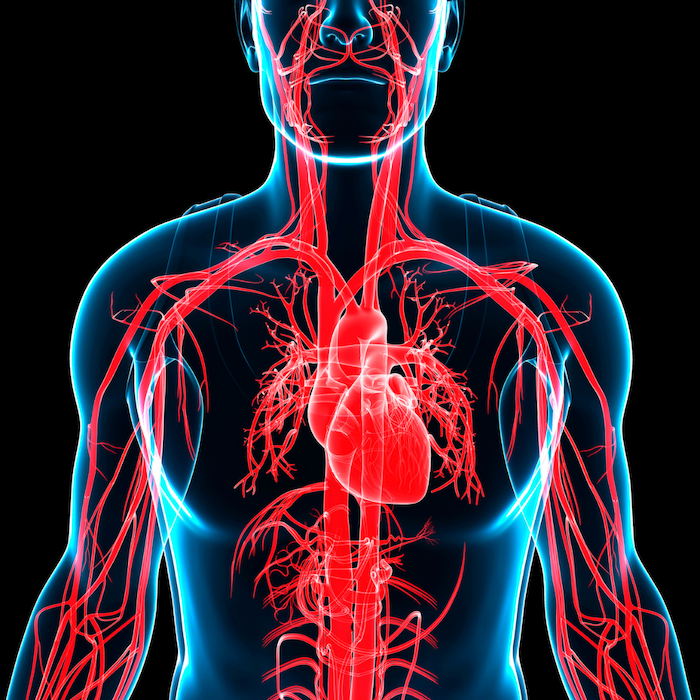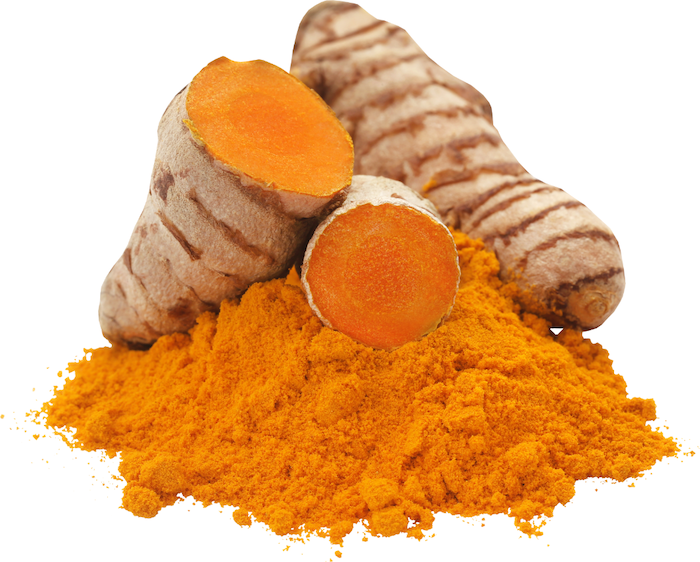You’ve probably noticed how some people seem to age gracefully while others struggle with wrinkles, fatigue, brain fog, and achy joints long before their time.
Scientists have a word for this hidden culprit: inflammaging.
It’s the slow, constant “simmer” of inflammation in your body. Unlike the sharp swelling you get from a sprained ankle, inflammaging works quietly in the background — damaging cells, breaking down tissues, and speeding up nearly every sign of aging.
In fact, researchers now believe inflammaging is one of the biggest drivers of age-related decline, affecting everything from your skin and joints to your memory and energy levels.
The good news? Once you understand where inflammaging shows up in your body, you can take steps to fight back — naturally.
Here are 7 ways inflammaging is aging you FAST, and what you can do to protect yourself.
1. Wrinkles and Skin Aging
When people think of aging, wrinkles are usually the first thing that comes to mind. But here’s the surprising part: wrinkles aren’t just about “getting older.” They’re about inflammation.
Chronic, low-grade inflammation — the hallmark of inflammaging — gradually breaks down collagen and elastin, the two proteins that keep your skin firm, smooth, and bouncy. Without these structural proteins, skin begins to sag, fine lines deepen, and elasticity fades.
Research shows that oxidative stress and inflammation accelerate the skin’s aging clock, causing more visible signs of damage, especially when combined with external factors like UV rays, pollution, and poor diet. One study even found that higher levels of inflammatory markers in the blood were directly correlated with more advanced skin wrinkling and thinning in women over 40.
Inflammaging doesn’t just affect how your skin looks — it also slows its ability to repair itself. That’s why cuts, irritation, or breakouts may take longer to heal as we age. The constant undercurrent of inflammation keeps skin in a weakened state, making it less resilient.
The result? A complexion that appears older, duller, and less vibrant than it should — sometimes years ahead of schedule.
 2. Brain Fog and Memory Decline
2. Brain Fog and Memory Decline
Ever walk into a room and completely forget why you went in there? Or struggle to find the right word in the middle of a conversation? That frustrating “brain fog” isn’t just bad luck. It can be a sign of inflammaging at work in your brain.
Here’s what happens: as we age, low-grade inflammation begins to affect neurons (your brain cells). This process, called neuroinflammation, interferes with how brain cells communicate and repair themselves. Over time, it can slow mental processing, weaken memory, and even set the stage for more serious issues like dementia.
Studies have found that people with higher levels of chronic inflammation in midlife experience faster cognitive decline decades later. In fact, researchers report that inflammatory molecules in the brain can damage the hippocampus — the part of your brain responsible for learning and memory.
And here’s the kicker: you don’t need to have a diagnosable condition to feel it. Even “mild” inflammation is enough to cloud focus, shorten your attention span, and drain your mental energy.
That’s why so many people in their 40s and 50s describe feeling “foggy” or “not as sharp as I used to be.” It’s not just aging — it’s inflammaging silently stealing your clarity.
3. Stiff, Achy Joints
Waking up with creaky knees or stiff hands isn’t just “getting older.” More often than not, it’s chronic inflammation quietly breaking down your joints.
Here’s why: your joints are cushioned by cartilage, a smooth, flexible tissue that lets bones glide against each other. But when low-grade inflammation lingers for years, it releases enzymes and free radicals that gradually wear away at this cartilage. Once that protective cushion thins, bones start rubbing more directly, causing stiffness, pain, and swelling.
Research shows that people with higher levels of inflammatory markers in their blood are much more likely to develop joint problems — even if they don’t yet have arthritis. And scientists now believe that inflammaging is one of the key drivers behind osteoarthritis, the most common joint disorder worldwide.
Even mild inflammaging can make your joints feel sore after a workout, stiff in the morning, or achy during damp weather. And because inflammation also damages the synovial fluid (the lubricant inside joints), your body has a harder time “oiling the hinges” that keep you moving smoothly.
The result? Less mobility, more stiffness, and a sense that your body is aging faster than it really is.
 4. Heart and Blood Vessel Strain
4. Heart and Blood Vessel Strain
Your cardiovascular system isn’t immune to inflammaging. In fact, it’s one of the first places where the damage shows up.
Chronic, low-level inflammation damages the endothelium, the thin lining of your blood vessels. When this lining becomes irritated, it stiffens and develops microscopic cracks. Your body rushes to patch these up with cholesterol and other compounds, which over time can create plaques that clog arteries.
This is why scientists now believe that heart disease isn’t just a “plumbing issue” — it’s deeply connected to inflammation.
Multiple studies have shown that people with higher levels of inflammatory markers, like C-reactive protein (CRP), have a much greater risk of developing high blood pressure, atherosclerosis, and even heart attacks. It’s not simply about cholesterol numbers anymore — it’s about the chronic inflammation that keeps vessels under attack.
Even if you don’t yet have diagnosed heart disease, inflammaging may already be at work. Symptoms like fatigue, shortness of breath during light exercise, or even cold hands and feet can sometimes trace back to inflammation-damaged circulation.
And here’s the kicker: your heart and vessels are silently battling this every single day. You might not notice until it becomes serious, but inflammaging has been quietly laying the groundwork for years.
5. Weakening Immunity
Your immune system is designed to protect you. But with inflammaging, it starts to turn against you.
As low-grade inflammation lingers in your body for years, it throws your immune balance out of whack. On one hand, your defenses become sluggish, making it harder to fight off infections like colds or the flu. On the other, your immune system may become overactive in the wrong ways, mistakenly attacking your own healthy tissues.
This is why scientists now link inflammaging to both greater infection risk and higher rates of autoimmune conditions. In fact, research shows that older adults with elevated inflammatory markers have weaker responses to vaccines and get sick more often, even from bugs that their bodies used to fight off easily.
But it’s not just about catching colds. Inflammaging also interferes with your body’s ability to repair damage and ward off chronic disease. That constant “background fire” keeps your immune cells exhausted, so when you actually need them, they can’t rise to the occasion.
The result? More sick days, slower recovery, and a general feeling of being “run down” that no amount of coffee or rest seems to fix.
 6. Digestive Upset
6. Digestive Upset
If you’ve noticed more bloating, stomach sensitivity, or irregularity as you’ve gotten older, you’re not alone — and inflammaging may be to blame.
Your gut is lined with a delicate barrier that controls what gets absorbed into your bloodstream. Chronic, low-grade inflammation slowly damages this lining, leading to what’s often called “leaky gut.” When that happens, food particles and toxins slip into circulation, triggering even more inflammation throughout the body.
It’s a vicious cycle: inflammaging hurts the gut, and poor gut health fuels more inflammaging.
Studies have shown that aging adults often have higher levels of inflammatory markers in the gut, which correlate with symptoms like bloating, abdominal pain, and IBS-like flare ups. Over time, this damage reduces your ability to properly absorb nutrients, including key vitamins and minerals that protect against aging.
And it’s not just about digestion. Because around 70% of your immune system lives in the gut, any inflammation there directly weakens your body’s defenses. That’s why people with chronic gut inflammation often feel tired, foggy, or generally “off.”
So while you might write off digestive discomfort as something you just have to live with, it’s often another clear sign that inflammaging is hard at work inside your body.
7. Fatigue and Slow Recovery
Feeling worn out more often? Struggling to bounce back after exercise, stress, or even a late night? These are classic signs that inflammaging is draining your energy reserves.
Here’s what’s happening: when your body is stuck in a state of low-grade inflammation, your immune system is always “on.” That constant activation burns through energy that should be fueling your muscles, brain, and organs. Instead of feeling recharged, you feel chronically tired.
Research shows that older adults with higher levels of inflammatory markers report more fatigue, reduced stamina, and slower recovery times after physical activity. Inflammaging also damages mitochondria — the tiny “power plants” inside your cells — which means your body can’t produce energy as efficiently as it used to.
And the effects don’t stop there. Inflammaging makes it harder for your muscles to repair after workouts, harder for your tissues to heal after minor injuries, and harder for your mind to feel sharp after stress. It’s why so many people feel like their body is “slowing down” long before they expect it to.
The reality? It’s not just age. It’s inflammaging working against your body’s ability to recover and thrive.
Why Turmeric Matters (And Why Bioavailability Is Everything)
Inflammaging isn’t just about aching joints or a few wrinkles. It’s a silent force aging you from the inside out. Think of those invisible fires burning within your brain, skin, heart, and gut.
 Thankfully, goodness in a certain golden spice — turmeric — offers a powerful way to cool internal inflammation and help you age more gracefully.
Thankfully, goodness in a certain golden spice — turmeric — offers a powerful way to cool internal inflammation and help you age more gracefully.
Here’s what the science shows:
- A meta-analysis of randomized clinical trials found that taking curcumin (the active compound in turmeric) significantly lowered major inflammatory markers like CRP, IL‑6, and TNF‑α within just a few weeks to months.
- In a triple-blind clinical trial, outpatients given turmeric showed a significant reduction in CRP and ESR — two key markers of inflammation — compared to placebo.
- Another trial demonstrated that a turmeric extract significantly reduced CRP and HbA1c levels while improving insulin sensitivity — an important marker of systemic inflammation.
But here’s the catch: turmeric works best when your body can actually absorb it. Curcumin is notoriously tricky to absorb on its own.
That’s where micelle liposomal delivery comes in — packaging turmeric in tiny fat-like carriers that help it get absorbed faster and more efficiently, so you actually reap its full benefits.
Your Anti-Inflammaging Ally
Ready to help your body calm the flames and age smarter, not harder?
Purality Health’s Micelle Liposomal Turmeric is formulated to deliver the most absorbable, effective form of turmeric so it can start doing what it’s meant to do — support your body’s natural balance, from head to toe.
>> Tap here and claim a special offer on highly absorbable turmeric
